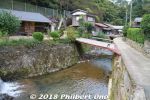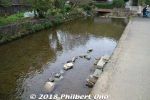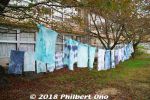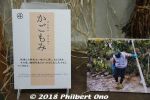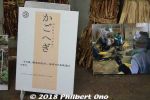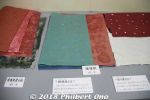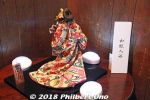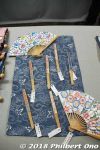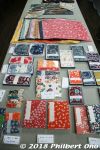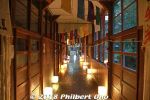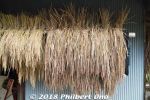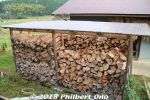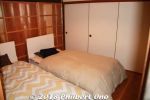 Image search results - "ayabe" Image search results - "ayabe" |
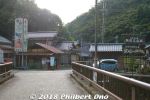
Kurotani is the name of the village (now part of Ayabe city) where they make Kurotani washi paper. This is the entrance to the small village in a valley.Kurotani Village started making washi about 800 years ago when 16 warriors of the Heike Clan defeated by the Minamoto Clan in Kyoto (Genpei War 1180–1185) fled and hid here to avoid capture. They and the local farmers made a living in summer by growing rice, but since there was nothing to do in winter, they thought of making washi paper. Washi can only be made in winter since it requires cold water.
|
|
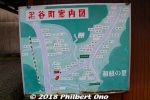
Kurotani Washi-no-Sato Japanese papermaking village in Ayabe, Kyoto.Once upon a time, there were a number of washi paper makers in northern Kyoto like Tango washi and Tanba washi, but now there's only one traditional maker that has survived called Kurotani washi. They work here in the small Kurotani Valley.
|
|
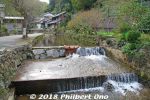
Kurotani village was blessed with this clean Kurotani River, essential for papermaking. Kurotani washi is quite famous now, even overseas.
|
|
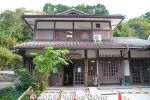
Kurotani village has this Kurotani Washi Kaikan gift shop (黒谷和紙会館). Kurotani is not touristy because it's not convenient to get here.
|
|
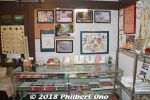
Inside Kurotani Washi Kaikan gift shop.
|
|
|
|
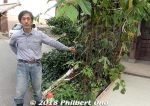
Kurotani washi mainly uses kozo or mitsumata mulberry plants as the raw material. This is our Kurotani washi guide showing us the kozo plants that can grow to three meters high.They are harvested in autumn by cutting the trunks or branches. They grow kozo mulberry near Ayabe Station. Kozo is called "kago" in Kurotani.
|
|
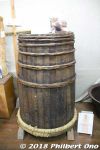
To make the paper fibers for washi, there are many laborious steps. After the kozo branches are cut in even lengths, they are stuffed in a barrel (koshiki) like this and placed over a boiling and steaming iron pot for three to four hours to soften the brown bark.
|
|
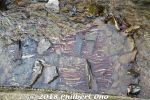
While the kozo branches are still hot, elderly ladies twist and strip off the brown bark (kuro-kawa 黒皮). The bark is dried, then soaked in river water like here.
|
|
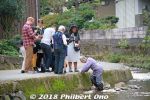
While soaking, the kozo bark is also kneaded by human feet to soften it. The water is cold, and it's a traditional job for the grandmas.
|
|
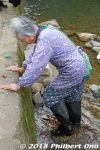
We just happened to come across her in the river kneadking the brown bark. How lucky we were.
|
|
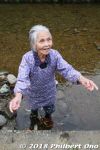
She's Horie Sayo, 86 years old, been doing it since her teens.
|
|
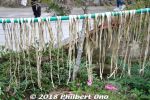
The brown kozo bark is shaved and scraped with a knife by hand to remove the brown bark skin and other blemishes. Then the becomes thin, white strips that are dried in the sun. (shiro-kawa 白皮)
|
|
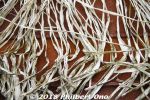
White kozo bark strips drying. These will then be mashed and beaten into fibrous globs. Preparing the kozo fibers from the bark is the most laborious and time-consuming part of washi making.
|
|
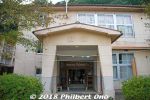
Also visited Kurotani Washi Kougei No Sato (Kurotani Washi Craft Village 黒谷和紙 工芸の里) a 20-min. car ride away.They were using an old elementary school.
|
|
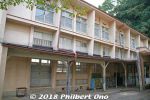
They use the 1st floor for making paper, while the second floor are washi exhibition rooms.
|
|
|
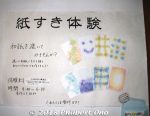
They offer washi papermaking lessons for ¥1,300 including admission.
|
|
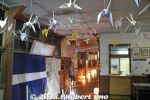
Entrance hall with origami cranes made of Kurotani washi. It really looks like an old school.
|
|
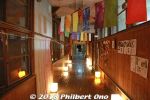
Corridor to rooms.
|
|
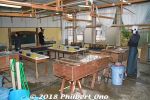
Washi papermaking room where we tried making Kurotani washi paper (postcards).
|
|
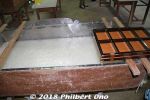
A large vat (sukifune) filled with washi fibers floating evenly in the water. The fibers are mixed in with a plant-based adhesive so they don't sink to the bottom and they also cling together to make the paper. A wooden mold (keta 桁) to make eight postcards on the right. Kurotani washi bills itself as Japan's strongest paper. In the 1920s, Kurotani washi was tested for strength and was declared the strongest washi in Japan. I was told Kurotani's kozo has longer fibers than other species so the paper is stronger.
|
|
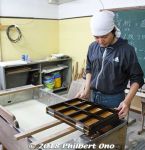
Our instructor first showed us how it was done. He used a mold to make eight washi postcards.
|
|

About sugeta.
|
|
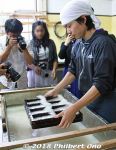
Dump the postcard mold into the vat and swish it left/right and forward/back evenly.
|
|

Takes three years to learn how to make washi paper with a mold. Ten years to become an expert. But we did it in a minute or two... Just dip the mold into the fibrous water, and swish it to the left/right and forward/back.
|
|

The postcards looked quite thick out of the mold, but they would get much thinner when dried.
|
|
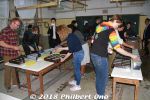
Afterward, we could decorate our postcards with colored ink/fibers.
|
|
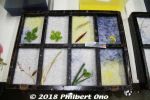
A few people even embedded leaves.
|
|
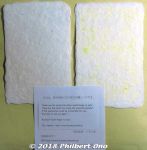
They later sent us our postcards. Mine came out okay.
|
|
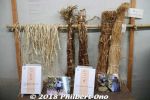
This shows how they typically hang and dry the white strips and bark strips.
|
|
|
|
|
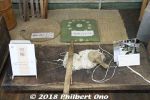
Later, it is mashed/beaten in a stone mortar.
|
|
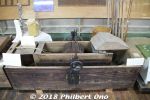
Then it goes through a mechanical beater for 10 min. to become a wet, fibrous mass. They also make and add a plant-based adhesive. Here's a good video (in Japanese) showing how they do it (the woman we saw in the river also appears in this video): https://youtu.be/-3ws9DlPVHo?t=425
|
|
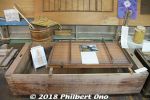
The vat and mold to make paper.
|
|

Kami-suki is what everyone can experience.
|
|
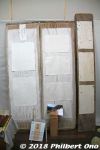
The washi shets are dried on wooden boards.
|
|
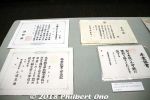
Local public schools have their kids make their diplomas with Kurotani washi.
|
|
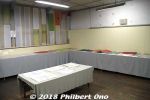
Second floor in former classrooms are exhibition rooms.
|
|
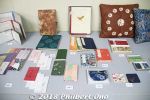
Kurotani washi has long fibers, making it very strong and durable. It has many uses such as umbrellas, shoji paper sliding doors, and packaging.
|
|
|
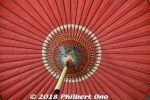
Kurotani washi can even be used for umbrellas.
|
|
|
|
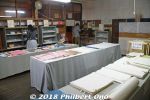
Gift shop.
|
|
|
|
|
|
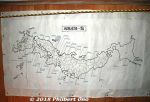
Places in Japan where washi is made.https://kurotaniwashi.kyoto
English: https://kurotaniwashi.kyoto/?page_id=450
|
|
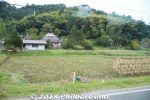
This is a farmhouse lodge (農家民宿) where we stayed in the city of Ayabe. It fronts rice paddies. The farmhouse lodge owner can pick you up at JR Ayabe Station.
|
|
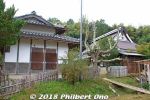
Farmhouse lodge (農家民宿) named Pokapoka Noen. It has two main buildings.
|
|
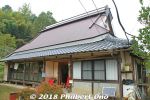
This is the main lodge where the kitchen, dining, and bath facilities are. It also has one guest room with twin beds. It is a traditional farmhouse with a thatched roof protected by a corrugated tin.Farm house in Ayabe, Kyoto Prefecture.
|
|
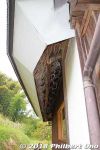
Uner the corrugated tin, you can see the thatched roof edge.
|
|
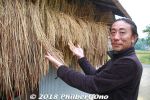
The 42-year-old owner, Kushida Kampei (櫛田寒平) moved to Ayabe from Tokyo seven years ago. He has his own rice paddies and other plots to grow his own rice and vegetables.
|
|
|
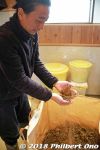
He also grows sesame seeds.
|
|
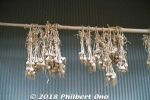
Garlic.
|
|
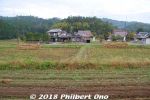
His rice paddies.
|
|
|
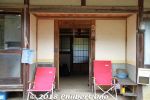
Entrance to the main lodge.
|
|
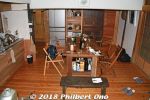
Kitchen and dining room. Totally renovated and modern on the inside, with a modern kitchen, toilet, and bath.
|
|
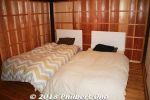
Guest room with twin beds.
|
|
|
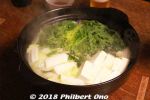
Our dinner included the rice and vegetables that he grew. (This was just the first serving.) It cost only ¥7,000 per night including dinner and breakfast.
|
|
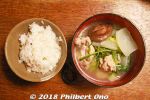
This was just the first serving.
|
|
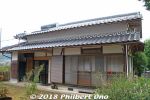
The other building was the guest house which was originally for the farmer's kids or relatives to stay when they returned to their hometown.
|
|

The guest room in the guest house was Japanese-style with twin futon.
|
|
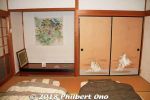
Very nice guest room.
|
|
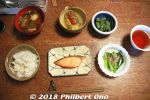
Breakfast.
|
|
|
|
|
|





